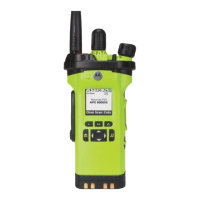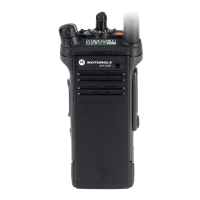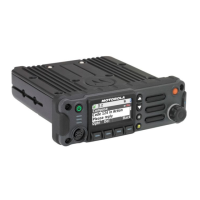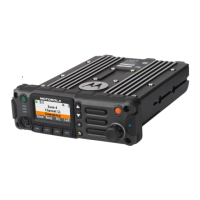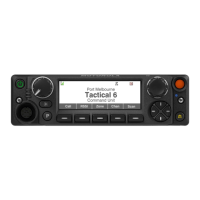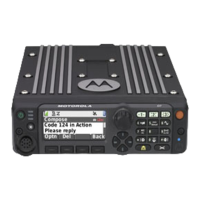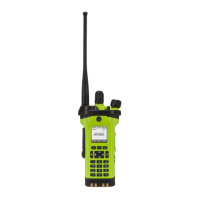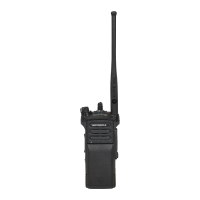What to do if Motorola APX 2000 Two-Way Radio has a general hardware failure?
- SSierra RamosAug 19, 2025
If your Motorola Two-Way Radio experiences a general hardware failure, try turning the radio off and then on again.
What to do if Motorola APX 2000 Two-Way Radio has a general hardware failure?
If your Motorola Two-Way Radio experiences a general hardware failure, try turning the radio off and then on again.
What to do if Motorola Two-Way Radio shows DSP RAM fatal error?
If your Motorola Two-Way Radio displays a DSP RAM fatal error, try turning the radio off, and then on again.
What to do if Motorola APX 2000 has secure hardware error?
If your Motorola Two-Way Radio indicates a secure hardware error, attempt to resolve the issue by turning the radio off and then on again.
How to fix secure hardware fatal error on Motorola APX 2000?
To address a secure hardware fatal error on your Motorola Two-Way Radio, try turning the radio off, and then on again.
How to fix FLASH ROM codeplug checksum fatal error on Motorola APX 2000 Two-Way Radio?
If your Motorola Two-Way Radio displays a FLASH ROM codeplug checksum fatal error, reprogram the codeplug.
How to fix FLASH ROM codeplug checksum non-fatal error on Motorola APX 2000?
To resolve a FLASH ROM codeplug checksum non-fatal error on your Motorola Two-Way Radio, reprogram the codeplug.
What to do if keypad board is not connected properly to Motorola APX 2000 Two-Way Radio?
If the keypad board is not connected properly to your Motorola Two-Way Radio, ensure the keypad board is fixed in place.
What to do for external accessory non-fatal error on Motorola Two-Way Radio?
If your Motorola Two-Way Radio displays an external accessory non-fatal error: * Verify the external accessory is connected. * Ensure the external accessory powers up. * Turn the radio off, then on.
What to do if I get an External Accessory Non-Fatal Error on Motorola APX 2000 Two-Way Radio?
If you are getting an External Accessory Non-Fatal Error on your Motorola Two-Way Radio: * Verify the external accessory is connected properly and powers up. * Turn the radio off, and then on again.
What to do if I see a General Hardware Failure Fatal Error on Motorola APX 2000?
If you experience a General Hardware Failure Fatal Error with your Motorola Two-Way Radio, try turning the radio off, and then on again.
| IP Rating | IP67 |
|---|---|
| Operating Temperature | -30°C to +60°C |
| GPS | Optional |
| Bluetooth | No |
| Frequency Range | 700/800 MHz |
| Power Output | 1-5 W (VHF), 1-3 W (700/800 MHz) |
| Channels | Up to 1, 000 |
| Battery Life | Up to 10 hours (digital) |
| Digital Protocol | APCO P25 |
| Frequency | VHF: 136-174 MHz, UHF: 380-470 MHz, 700/800 MHz: 764-870 MHz |
| Power | 1-3W (700/800 MHz), 1-5W (VHF) |
Contains instructions for safe usage and RF energy awareness for portable two-way radios.
States the radio is restricted to occupational use only.
Provides basic operation instructions for the APX Portables.
Explains warning, caution, and note notations used in the manual.
Features designed to enhance security, quality, and efficiency of the radios.
Guidance on consulting dealer/admin for radio settings and accessories.
Instructions for charging the radio's battery to ensure optimum capacity.
Steps for correctly attaching the battery to the radio frame.
Procedure for securely attaching the antenna to the radio.
Guide to removing and attaching the accessory connector cover.
Instructions on how to attach the belt clip to the radio.
Steps to power on the radio using the MFK or control knob.
How to increase or decrease the radio's volume using the control knob.
Identifies and describes the physical parts and controls of the radio.
Explains features that can be programmed and assigned to radio controls.
Details on using the keypad for character input in various modes.
Explains the basic purposes and operation of the PTT button.
Describes LCD icons that indicate radio operating conditions.
Explains the meaning of the LED colors and patterns.
Explains the meaning of the Top Lightbar colors and patterns.
Lists audible alert tones and the conditions under which they occur.
Procedures for selecting radio zones and channels using various methods.
Guides for performing talkgroup, private, and telephone calls.
How to use the monitor feature to check channel clarity before transmitting.
Covers selective, talkgroup, and status calls.
Feature for storing frequent channels in Dynamic Zones for easier navigation.
Procedures for managing contact entries, call lists, and editing details.
How to view, edit, and change scan list status and priorities.
Explains different emergency modes like Alarm, Call, and Silent Alarm.
Safety feature that detects radio tilt or lack of motion to trigger alerts.
Provides automated data application registration for the radio.
Allows associating a username with the radio for data applications.
Features for sending, receiving, and managing text messages.
Details on secure radio operation, encryption, and key management.
How the radio uses GPS for location determination and features.
Covers connecting, pairing, and managing Bluetooth devices.
Management of trunking system operations like Failsoft.



